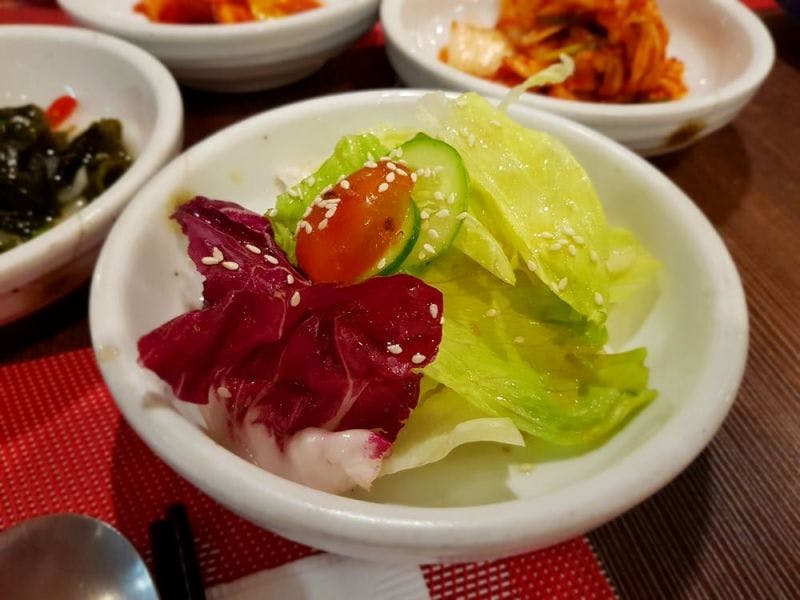your cart
Your cart is empty.
General Articles
Guide to Japanese Pickles
Pickling has been used since ancient times to help preserve fruit and vegetables. With pickled ingredients, you are able to eat vegetables or fruit at a time when they may not be seasonally available, particularly in the past.
In Japan, pickle or tsukemono was initially created using seawater, in which the salt helped to pickle ingredients. Since then, pickling techniques have developed, and the likes of soy sauce, vinegar and miso have all been trialled in creating pickle.
Pickle is often a staple on the Japanese dining table, acting as an accompaniment to meals. It adds extra flavour, texture and colour to a meal, as well as offering vitamins and probiotic benefits.

Pickling has been used since ancient times to help preserve fruit and vegetables. With pickled ingredients, you are able to eat vegetables or fruit at a time when they may not be seasonally available, particularly in the past. In Japan, pickle or tsukemono was initially created using seawater, in which the salt helped to pickle ingredients. Since then, pickling techniques have developed, and the likes of soy sauce, vinegar and miso have all been trialled in creating pickle. Pickle is often a staple on the Japanese dining table, acting as an accompaniment to meals. It adds extra flavour, texture and colour to a meal, as well as offering vitamins and probiotic benefits.
What is ‘Japanese Pickle’?
Many countries have their own version of pickle, with the Korean kimchi and the German sauerkraut being notable examples. In Japan, there isn’t exactly one key type of pickle. Instead, there are many varieties of pickle available that each offers a distinct flavour experience. Here we will explore some of the popular types of pickle available in Japan.
Shiozuke
Shiozuke is a method of pickling that uses salt. It is one of the easiest pickles to make. Vegetables are thinly sliced and covered with salt, causing fermentation as they release lactic acid. The ingredients used should be fresh and in season to create the desirable crisp and light texture of a shiozuke pickle.
Umeboshi
Umeboshi is one of the most common types of pickle in Japan and is known for being a popular addition to bento boxes. This pickle is made with sour Japanese plums, which are salted to create umeboshi. Red shiso leaves are also added to the pickling process, to give the plums their distinctive red appearance.
Kyuri Asazuke
Kyuri Asazuke is cucumber pickled in salt. It is thinly sliced and served as a side dish. You can also find whole cucumbers pickled, and these are particularly popular as a street food dish.
Hakusai No Sokusekizuke
This form of shiozuke is made from napa cabbage and is one of the most popular forms of salted pickle. It is one of the quickest and easiest types of pickle to make. Pickled napa cabbage will typically be served as a side dish and may be seasoned with chilli pepper and yuzu juice for a sharp kick.
Shoyuzuke
Shoyuzuke is a type of pickle made using soy sauce. It is less common than salt pickling, but the salt within the soy sauce causes a similar effect. However, the soy sauce is typically also combined with sugar and vinegar, which adds sweet and salty notes to the pickle.
Ninniku Shoyuzuke
Ninniku Shoyuzuke is garlic that has been pickled in soy sauce. The garlic is left raw, and typically whole cloves are used. The pickling process helps to make the raw garlic taste and aroma more palatable; however, it is still a particularly strong and pungent pickle!
Suzuke
Suzuke is pickle made using Japanese rice vinegar. The vinegar adds tangy notes and a crunchy texture to the pickled ingredients. Pickling with rice vinegar does not keep so well out of the fridge as other forms of pickle, as it has lower acidity than other forms of vinegar.
Gari
Gari is pickled ginger, and you will have likely tried this if you have ever had sushi. The ginger is sliced and pickled with sugar and vinegar, giving it a sweet taste. It is used as a palate cleanser between sushi courses.
Beni Shoga
Beni Shoga is another type of pickle made using ginger. This time, thin strips of ginger are pickled using a brine left over from the creation of the umeboshi pickle. This dyes the ginger a pink-red colour that adds vibrancy to many dishes.
Kasuzuke
Kasuzuke pickle is made from the mash that remains after filtering sake during its production. The sake lees (mash) is mixed with sugar, salt and mirin, and this is used to pickle ingredients. The sake lees leave an alcoholic tang on the pickle it creates, but it does make it one of the longer-lasting pickles.
Narazuke
Narazuke is a type of pickle that uses the kasuzuke style. It has been made for over 1000 years in the Nara region, and uses ingredients like cucumber and melon.
Misozuke
Misozuke is pickling using miso paste as the base. The miso paste is typically flavoured with ginger and garlic before being stuffed with sliced vegetables. These are then left to pickle for up to a few weeks.
Nasu
Nasu is one of the most popular miso paste pickles. It is made from nasu, the Japanese aubergine, which develops a sweet, flavourful taste from the miso.If you have any fruit or vegetables going spare, then why not try your hand at turning them into a delicious Japanese-style pickle and enjoy them for months to come!Alternatively, you can find a whole range of Japanese pickle online at our Japanese supermarket!
this site uses cookies
We and our advertising partners use cookies on this site and around the web to improve your website experience and provide you with personalised advertising from this site and other advertisers. By clicking allow, you accept the placement and use of these cookies for these purposes. Learn More


